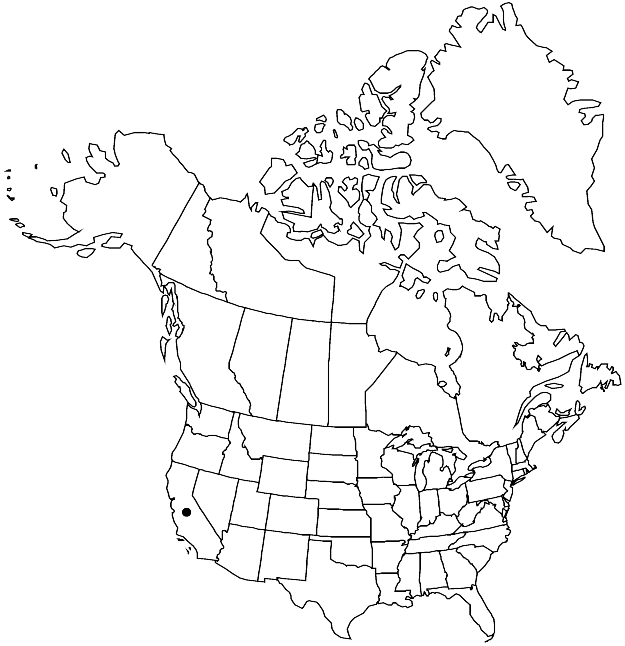Streptanthus diversifolius
Proc. Amer. Acad. Arts 17: 363. 1882.
Annuals; (somewhat glaucous), glabrous throughout. Stems branched distally, (1–)2–9(–10.5) dm. Basal leaves not rosulate; petiolate; blade pinnatisect to pectinate into filiform segments, 2–8 cm. Cauline leaves (petiolate proximally, sessile distally); blade pectinate or pinnatisect into filiform segments, or (distally) linear-lanceolate to ovate or cordate, 2–12 cm, (segments 0.4–2.7 cm × 0.5–1.5mm), base not auriculate proximally, amplexicaul distally, margins entire distally, becoming bracts. Racemes bracteate below or between proximalmost 1 or 2 flowers. Fruiting pedicels divaricate to divaricate-ascending, (straight), 2–10 mm. Flowers: calyx urceolate; sepals yellow or purplish, 5–7 mm, keeled, (apex recurved); petals pale yellow to whitish (with purple veins, recurved), 8–16 mm, blade 3–6 × 1.5–3.5 mm, margins not crisped, (undulate), claw 5–10 mm, narrower than blade; stamens in 3 unequal pairs; filaments (distinct): abaxial pair 2.5–6 mm, lateral pair 1.5–4 mm, adaxial pair 4–8 mm; anthers: abaxial and lateral pairs fertile, 3.5–4 mm, adaxial pair partially fertile, 1.5–2.3 mm; gynophore 0.5–1.5 mm. Fruits geniculately reflexed, smooth, straight, flattened, 3–9 cm × 1–1.5(–2.2) mm; valves each with obscure midvein; replum straight; ovules (22–)38–80 per ovary; style 0.2–1 mm; stigma obscurely 2-lobed. Seeds oblong, 1–1.5(–2.2) × 0.6–1(–1.5) mm; wing (0–)0.05–0.1(–0.4) mm wide, distal. 2n = 28.
Phenology: Flowering Apr–Jul.
Habitat: Dry rock outcrops, granitic domes, adjacent road cuts, disturbed areas, open oak woodland
Elevation: 200-1900 m
Discussion
Streptanthus diversifolius is distributed in Butte, El Dorado, Fresno, Madera, Mariposa, Tuolumne, and Tulare counties.
Selected References
None.
